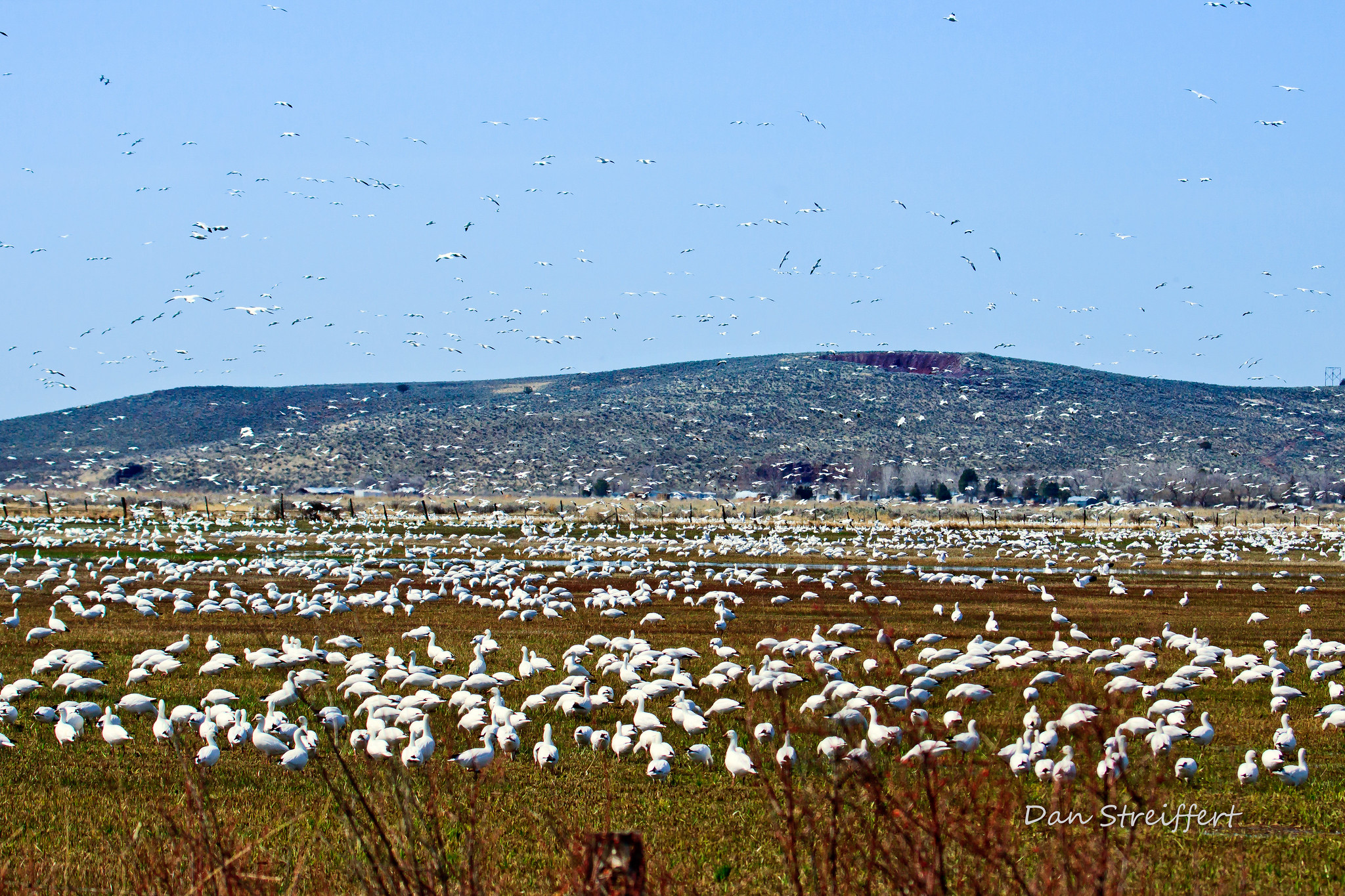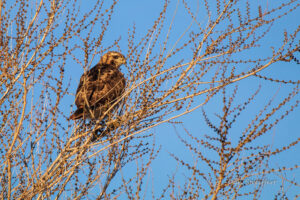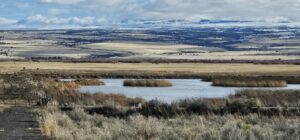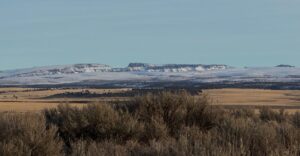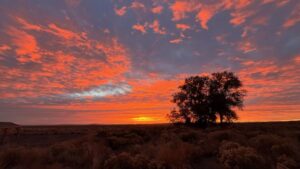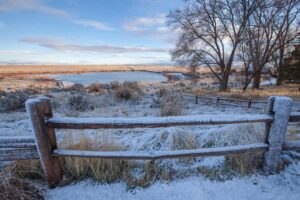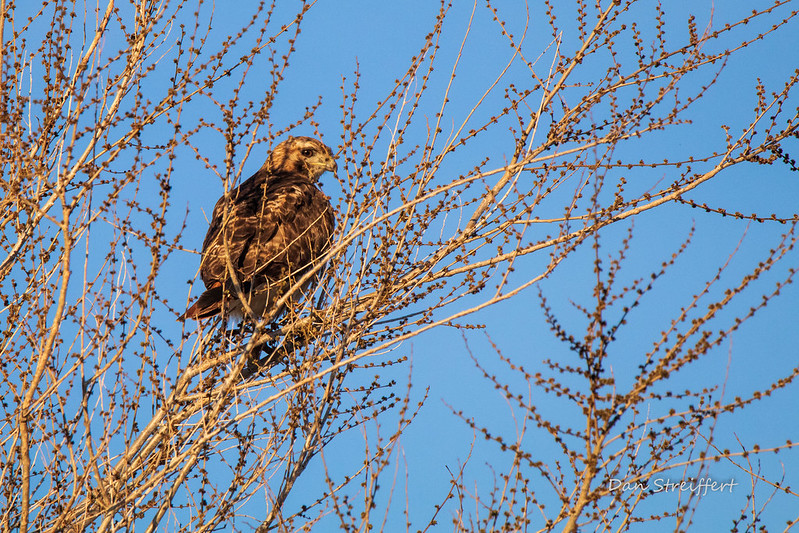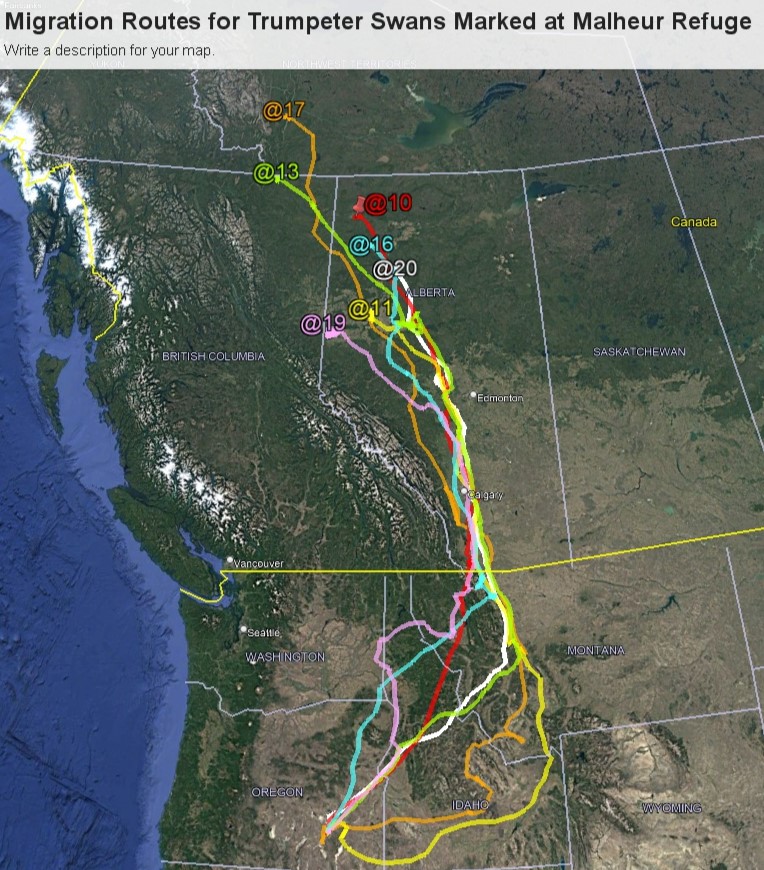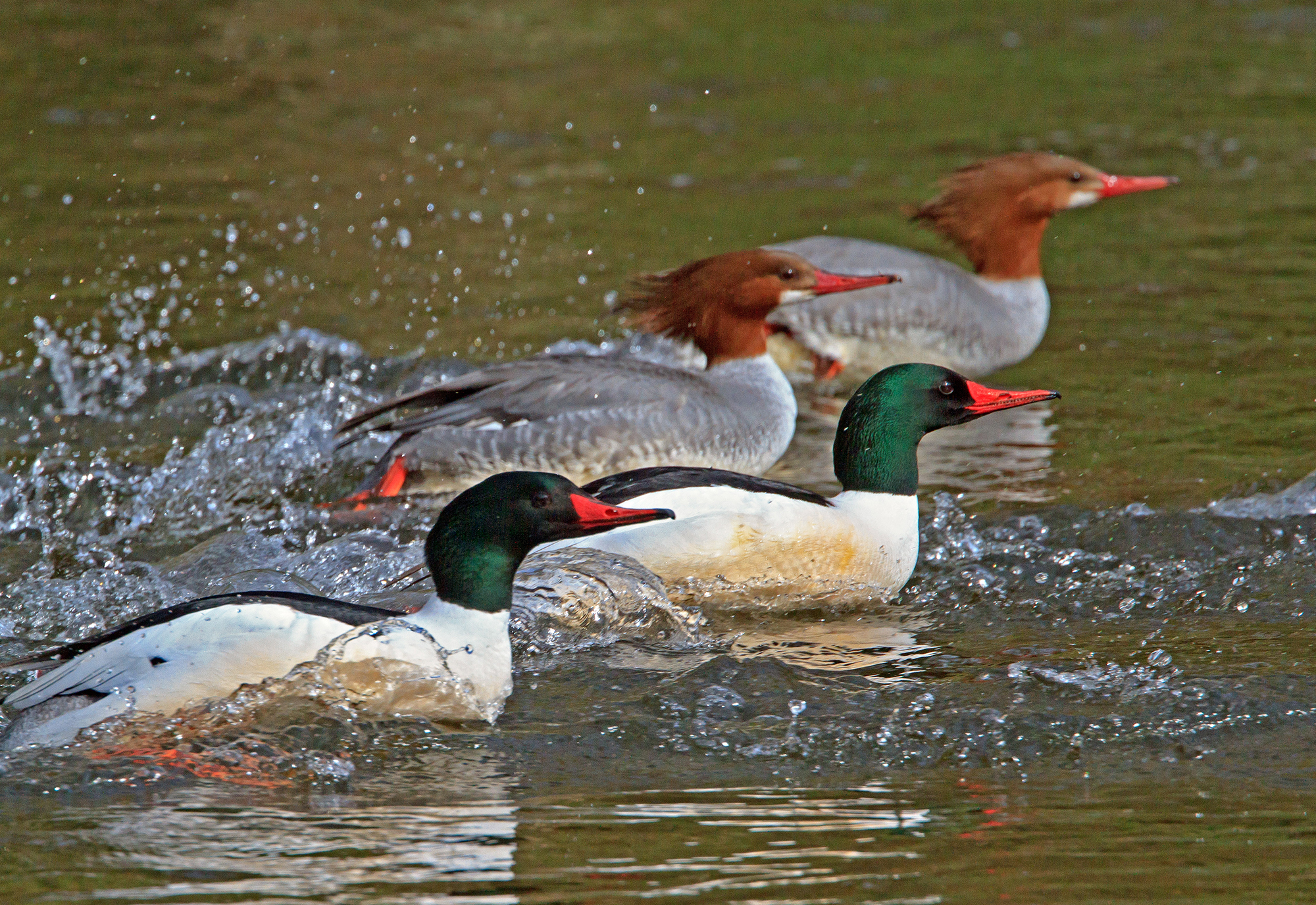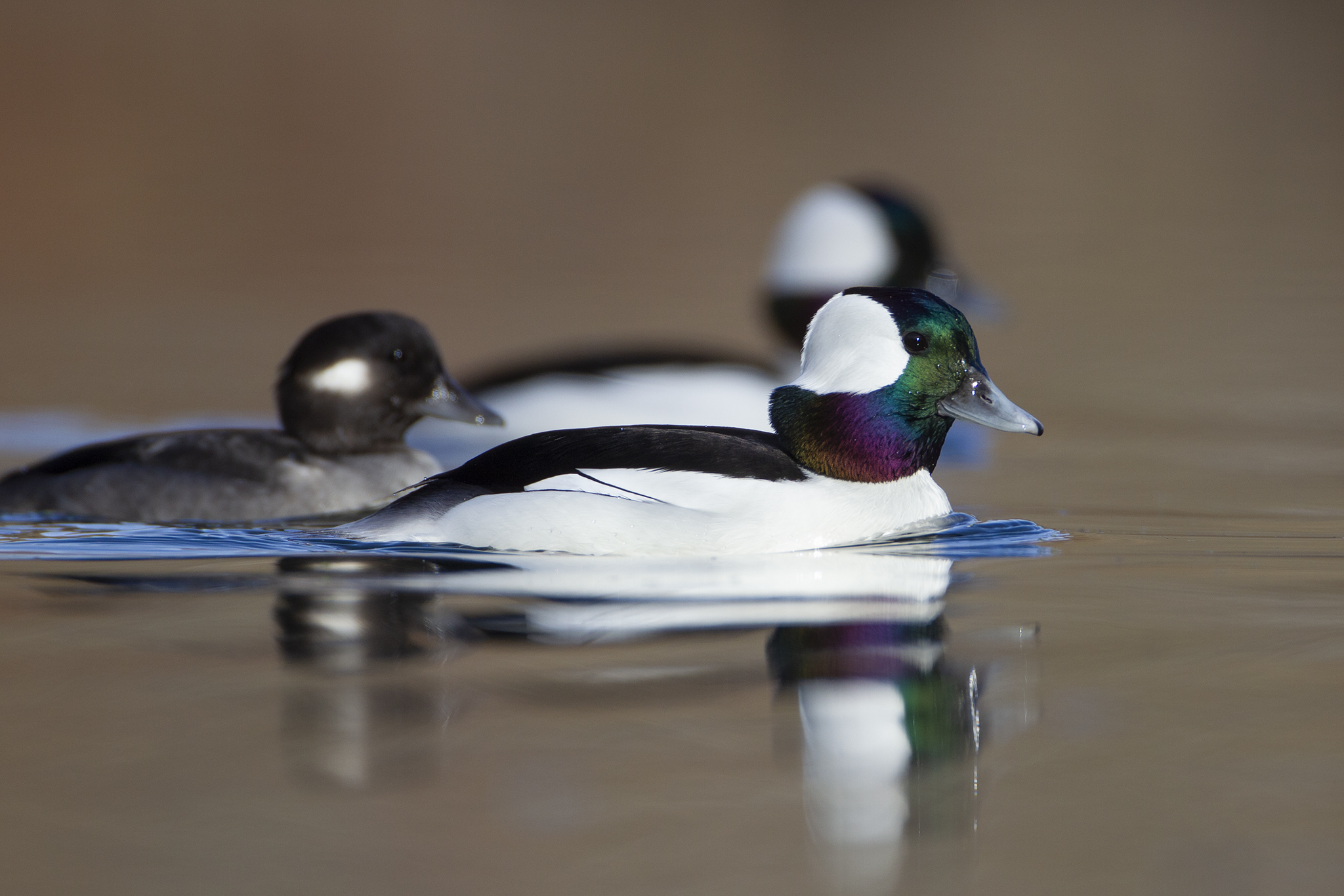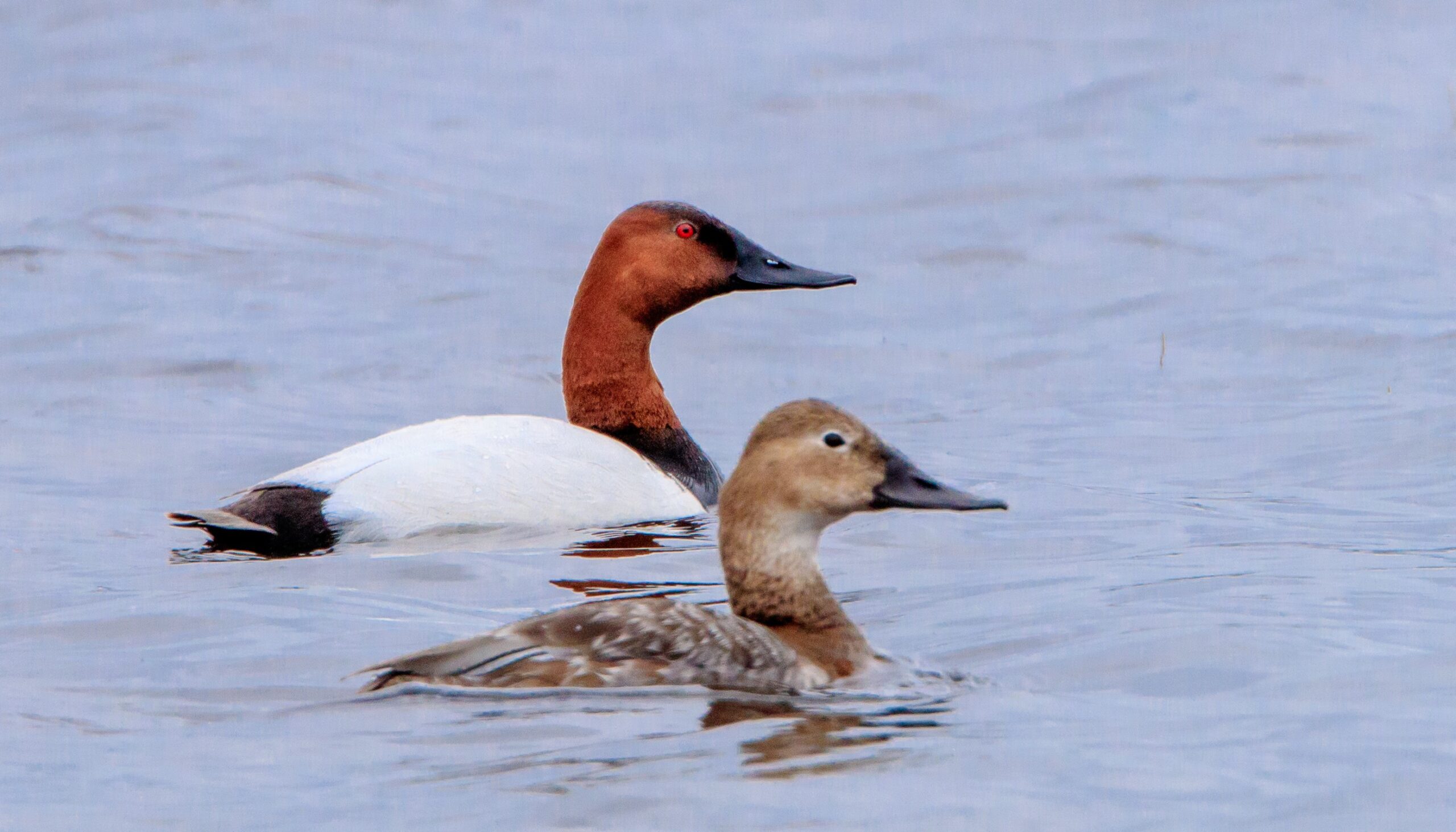Written by Teresa Wicks/Photos by Dan Streiffert
Ross’s Geese are the “stubby-billed” and smaller white geese that arrive in the Harney Basin in large numbers each spring. One of two species of ‘white geese’ that migrate through the Pacific Flyway, they regularly use the Harney Basin as a stopover during their flight from their winter grounds in CA to their breeding grounds in the Canadian Arctic. Ross’s Geese have expanded their breeding and wintering territories eastward in the past several decades, encroaching on Snow Goose breeding grounds, and in some cases creating hybrid Ross’s/Snow Geese. In areas where there are large nesting populations of Ross’s (and Snow) Geese, the tundra is sometimes so denuded of vegetation that the impact is visible from space!
In the Harney Basin, Snow Geese tend to arrive in the Basin a little earlier than the Ross’s Geese, the former peaking later in the spring. These large flocks of geese tend to congregate in the agricultural fields of the Silvies Floodplain. Historically, they would have been drawn to the myriad of desert wetlands throughout the intermountain west. However, as wetland habitat diminished across the intermountain west, the agricultural stubble (mowed fields) of the Harney Basin has become increasingly important for migrating waterfowl. This is, in part, because of the protein rich grass and forb shoots found in these fields that provide ample fuel for northward migration.
Like Snow Geese, Ross’s Geese sometimes come in a dark morph that gives them a blue appearance. However, in Ross’s Geese, these dark morph individuals tend to be less common than dark morph Snow Geese. Interestingly, Ross’s Goose goslings hatch with light down or gray down, though goslings with either shade of down grow into light-morph adults.


Now, about that name. Ross’s Geese are named after the first white guy to shoot and preserve a specimen that was sent back east to the Smithsonian. Some readers may know about the #BirdNamesForBirds effort that started in earnest in 2020. The purpose of this project is to remove honorific patronyms from birds and give them names that actually tell us something about the bird we are observing. For example, a new name could be an onomatopoeia. That is, their name could be what they say. This is a common naming practice in many Indigenous cultures around the world and can be pretty effective. Ross’s Geese could transform from a patronymed bird to the Woo’woo [Goose], as I hear them, or as described by Cornell, the Keek-keek Goose. Or perhaps a physical descriptor would be more popular in Western culture. They could become the Short-billed Goose. Or the Dower Goose, since they lack the grin-patch of the Snow Goose. The possibilities are fairly endless.


Fields turn white with geese in the springtime. 

Each goose seems to make themselves known – I’m Here!!! 

If you listen hard enough you can hear this picture!

